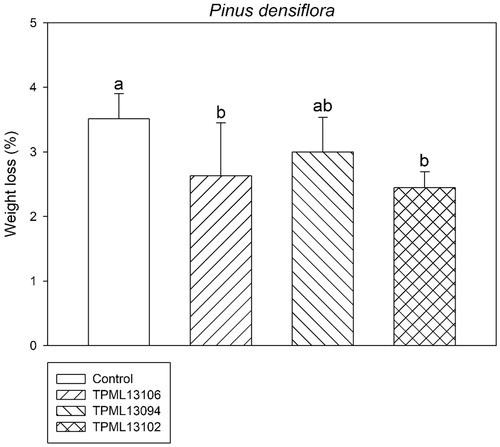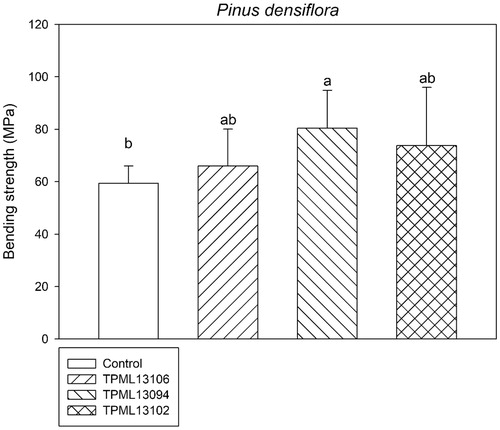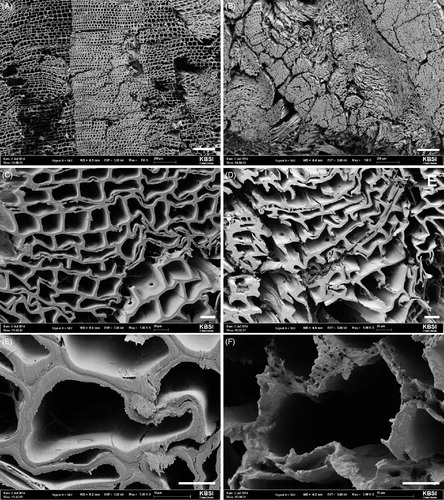Figures & data
Table 1. Wood decay fungi used for testing the antifungal activity of Streptomyces spp.
Table 2. Identity of five Streptomyces spp. isolated in this study.
Table 3. Antifungal activity of Streptomyces spp. against four WDF.
Table 4. Suppression rate (%) of the growth of WDF.
Figure 1. Comparison of the weight loss (%) of Pinus densiflora wood blocks treated with the selected Streptomyces spp. at 120 days after inoculation with Gloeophyllum trabeum. Means with the same letter on the bar are not significantly different, as analyzed with Tukey’s honestly significance difference test (p = .017 at 95% confidence interval).

Figure 2. Comparison of the compression strength (perpendicular or parallel to the grain) of Pinus densiflora wood blocks subjected to treatment with selected Streptomyces spp. for 120 days after inoculation with Gloeophyllum trabeum. Means with the same letter on the bar are not significantly different based on Tukey’s honestly significance difference test (p = 1.708e−05 and 2.536e−05 at 95% confidence interval for compression strength perpendicular and parallel to the grain, respectively).

Figure 3. Comparison of the bending strength of Pinus densiflora wood blocks treated with the selected Streptomyces spp. for 120 days after inoculation with Gloeophyllum trabeum. Means with the same letter on the bar are not significantly different, based on Tukey’s honestly significance difference test (p = .017 at 95% confidence interval).

Figure 4. Analysis of changes in the chemical components, including lignin and holocellulose, at 120 days after inoculation with Gloeophyllum trabeum on the wood block of Pinus densiflora treated with the selected Streptomyces spp. (p < 2e−16 at 95% confidence interval).

Figure 5. Scanning electron micrographs (×150, ×1000, and ×5000) of cross-sections of Pinus densiflora specimens at 120 days after its inoculation with Gloeophyllum trabeum. Blocks treated with Streptomyces sp. 1 (A–C) and the non-treated controls (D–F). (A, D) bar 200 μm; (B, E) bar 20 μm; (C, F) bar 10 μm.

